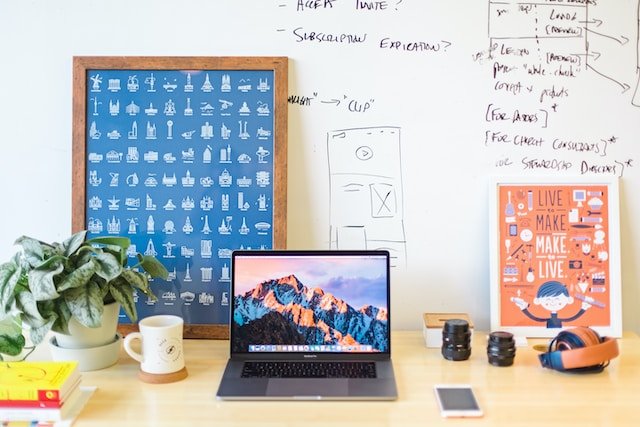
Can One Get a UX Design Job Without Prior Experience?
Understanding the Role of a UX Designer
User Experience (UX) design is an essential aspect of modern product development. UX designers focus on creating products that provide meaningful and relevant experiences to users. This involves designing the entire process of acquiring and integrating the product, including aspects of branding, design, usability, and function.
The Journey to Becoming a UX Designer
Breaking into UX design without prior experience may seem daunting, but it’s entirely feasible with the right approach. Key steps include self-education, networking, and practical experience. Understanding the core principles of UX design is the first step in this journey.
Formal Education in UX Design: Is It Necessary?
While formal education in UX design can be beneficial, it’s not a strict requirement. Many successful UX designers have come from diverse educational backgrounds. There are numerous online courses, bootcamps, and resources available for those who choose to self-educate.
Career Transition: Entering UX Design from Other Professions
Transitioning into UX design from another profession is a common path. Skills from various fields, such as psychology, graphic design, and IT, can be incredibly beneficial in UX design. Professionals often find that their previous experience provides a unique perspective in their new UX role.
Embarking on a UX Design Career Irrespective of Educational Background
Regardless of your educational background, beginning a career in UX design requires a proactive approach. Start by learning the basics through online courses or workshops, build a portfolio with personal or freelance projects, and network with industry professionals.
Beginning with a Prep Course in UX Design
Introductory courses in UX design, often available online, can provide a solid foundation. These courses cover fundamental concepts and tools, setting the stage for more advanced studies or practical applications.
Choosing Your Desired Path in UX Design
UX design is a broad field with various specializations, including user research, interaction design, and visual design. Assessing your interests and strengths can help you choose a path that aligns with your career goals.

Taking Advantage of Free UX Design Courses
Exploring Free Educational Resources for Aspiring UX Designers
The internet offers a wealth of free resources for those aspiring to enter the field of UX design. These resources are ideal for beginners who want to gain a foundational understanding of UX principles without financial commitment. They provide an accessible starting point for self-directed learning and skill development in the field of UX design.
Notable Free UX Design Courses and Resources
Among the plethora of free resources, several stand out for their quality and comprehensiveness. Springboard, for instance, offers a free UX design curriculum that covers fundamental concepts and practices. InVision’s learning path is designed specifically for designers looking to delve into UX, providing practical insights and tips. LinkedIn Learning features a course on user experience design that includes both theoretical and practical elements, making it a great resource for beginners. Additionally, The Gymnasium offers a UX fundamentals course that provides a solid introduction to the field, covering essential topics and methodologies. These resources are invaluable for anyone looking to start a career in UX design, offering high-quality education at no cost.
Leveraging Free Resources for UX Design Learning
Beyond formal courses, aspiring UX designers can learn from blogs, follow influencers in the field, and watch YouTube channels dedicated to UX design. These resources offer insights into industry trends, best practices, and real-world applications.
Gaining Practical Experience through Projects
Working on Diverse UX Design Projects
Gaining hands-on experience is a fundamental part of growing as a UX designer. Undertaking a variety of projects, such as website design and mobile app development, is not only beneficial for building a diverse portfolio but also essential for honing your UX design skills. These real-world projects provide invaluable opportunities to apply theoretical knowledge in practical scenarios, allowing you to understand user needs and design solutions effectively.
Types of Projects to Enhance UX Skills
Engaging in different types of projects can significantly enhance your UX skills. For instance, creating user interfaces for websites, developing user-centric mobile applications, or even redesigning existing digital products to improve user experience are all excellent ways to develop your abilities. Each project type challenges you to apply UX principles in unique contexts, thereby broadening your expertise and making you a more versatile designer.
Connecting with Fellow UX Design Learners
Networking with other learners and professionals in UX design can provide support, insights, and opportunities. Joining online forums, attending meetups, and participating in design communities are excellent ways to connect.

Completing a Comprehensive UX Design Bootcamp
Selecting the Right Bootcamp for In-Depth UX Training
When choosing a UX design bootcamp, it’s crucial to consider factors like curriculum depth, industry reputation, and alumni success. A good bootcamp should provide comprehensive training covering fundamental concepts, tools, and real-world applications. Look for programs that offer mentorship, hands-on projects, and career support to ensure you gain not only theoretical knowledge but also practical skills and industry insights.
Leading UX Design Bootcamps
Several reputable UX design bootcamps stand out for their quality of education and success in launching careers. Springboard’s UX Design Bootcamp is known for its personalized mentorship and job guarantee. Kenzie Academy offers a part-time program catering to working professionals. The Interaction Design Foundation focuses on interaction and user experience principles. Designlab’s UX Academy is praised for its rigorous curriculum and career-focused training. Lastly, General Assembly’s UX Design Immersive program is recognized for its immersive experience and extensive network in the tech industry.
Acquiring Certifications in UX Design
Recognized UX Design Certificates to Boost Your Resume
In the realm of UX design, certifications can play a vital role in validating your skills and knowledge to potential employers. They are particularly beneficial for those who are self-taught or transitioning from another field. Certifications can demonstrate a commitment to the profession and a standardized level of expertise, making your resume stand out in a competitive job market.
Noteworthy UX Design Certifications
Among the most recognized UX design certifications, the Google UX Design Certificate offers comprehensive training ideal for beginners. It covers the fundamentals of UX design, user-centered design processes, and hands-on projects. The Nielsen Norman Group UX Certification is globally recognized and focuses on various aspects of user experience. Bentley University’s UX Certificate Program is another esteemed certification, offering a blend of theory and practical application, taught by industry experts. Each of these certifications provides unique benefits, whether you’re looking to solidify your foundation in UX design or seeking to specialize in specific areas of the field.
Gaining Real-World UX Experience
Internships and Practical Exposure in UX Design
Gaining real-world experience through internships or volunteer work is a pivotal step in a UX design career. These opportunities allow you to immerse yourself in the practical aspects of UX design, from understanding user needs to collaborating with cross-functional teams. They are not only a chance to apply your skills in real-world scenarios but also a platform for building a professional network, which can be invaluable for future job prospects.
Enhancing UX Skills with Design Tools
Mastering Tools Essential for UX Design
For UX designers, proficiency in design tools is non-negotiable. Familiarizing yourself with industry-standard tools such as Sketch, Adobe XD, Figma, and InVision is crucial. These tools enable the creation of wireframes, prototypes, and high-fidelity designs. Mastery of these tools allows for efficient and effective design processes, making you a more competent and versatile designer.

Showcasing Your Abilities to Potential Employers
Effectively showcasing your UX design skills to potential employers involves creating a strong portfolio and resume. Your portfolio should not only display your final designs but also your thought process, problem-solving approach, and how you address user needs. Including case studies that detail the challenges, your solutions, and the outcomes of your projects can significantly enhance your portfolio’s impact. A well-crafted resume and portfolio are your primary tools for making a strong impression on potential employers.
Exploring Opportunities in the UX Field for Beginners
Even without extensive experience, there are several entry-level positions in UX design available for beginners. These roles offer a gateway into the field and provide essential practical experience. Some common positions include Junior UX Designer, responsible for assisting in the design process and user research; UX Specialist, focusing on specific aspects of user experience; Interaction Designer, concentrating on how users engage with digital products; Entry-level UX Researcher, involved in understanding user behaviors and needs; and Junior Product Designer, working on the design aspects of product development.
Examples of Entry-Level UX Jobs
These entry-level roles are crucial for gaining firsthand experience in UX design. They typically involve working under the supervision of senior designers, offering a great learning environment. The responsibilities might include conducting user research, creating wireframes, designing interfaces, and collaborating with other team members. These positions are ideal for individuals looking to start their careers in UX design and grow professionally in the field.
Strategies to Enhance Employability in UX Design
Improving your employability in the competitive field of UX design involves a multi-faceted approach. Building a strong theoretical foundation in UX principles is crucial. This can be achieved through self-study, formal education, or online courses. Mastering essential UX skills such as user research, wireframing, prototyping, and user testing is also important. Practical application of your knowledge through personal or volunteer projects can further enhance your skillset.
Key Steps to Increase Hireability as a UX Designer
Increasing your hireability in UX design also involves finding a mentor who can provide guidance and feedback, expanding your professional network through industry events and online communities, continuously upskilling to stay abreast of the latest trends and tools in the field, and applying for jobs with confidence. A well-prepared portfolio showcasing your best work and a tailored resume highlighting relevant skills and experiences are critical for making a strong impression on potential employers.

Muhammad Moiz, a Dartmouth College Computer Science major, is an experienced and respected figure in the fields of digital marketing and programming. Moiz excels in demystifying complex technical topics, making him a valuable resource for both seasoned professionals and those new to the tech world.

